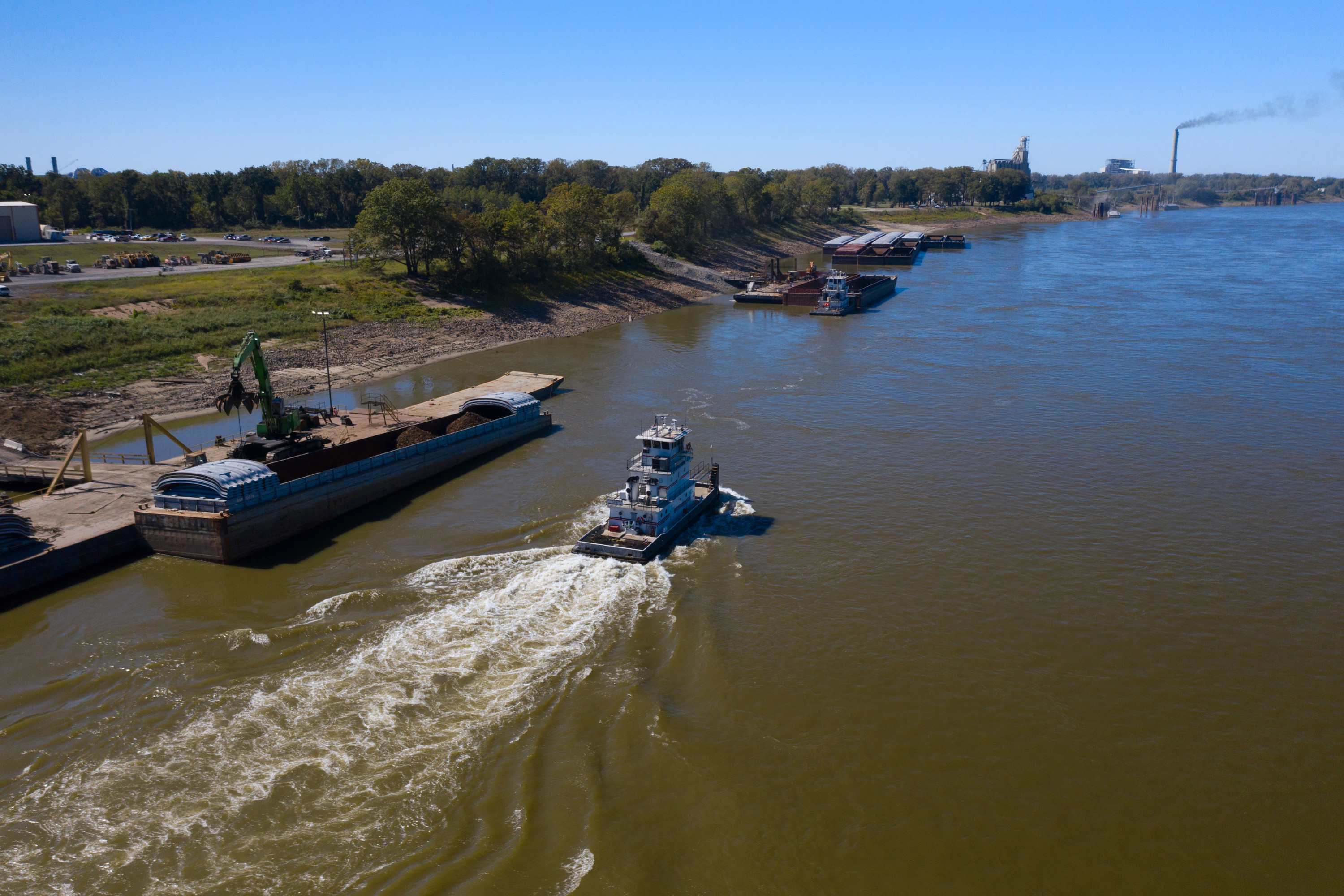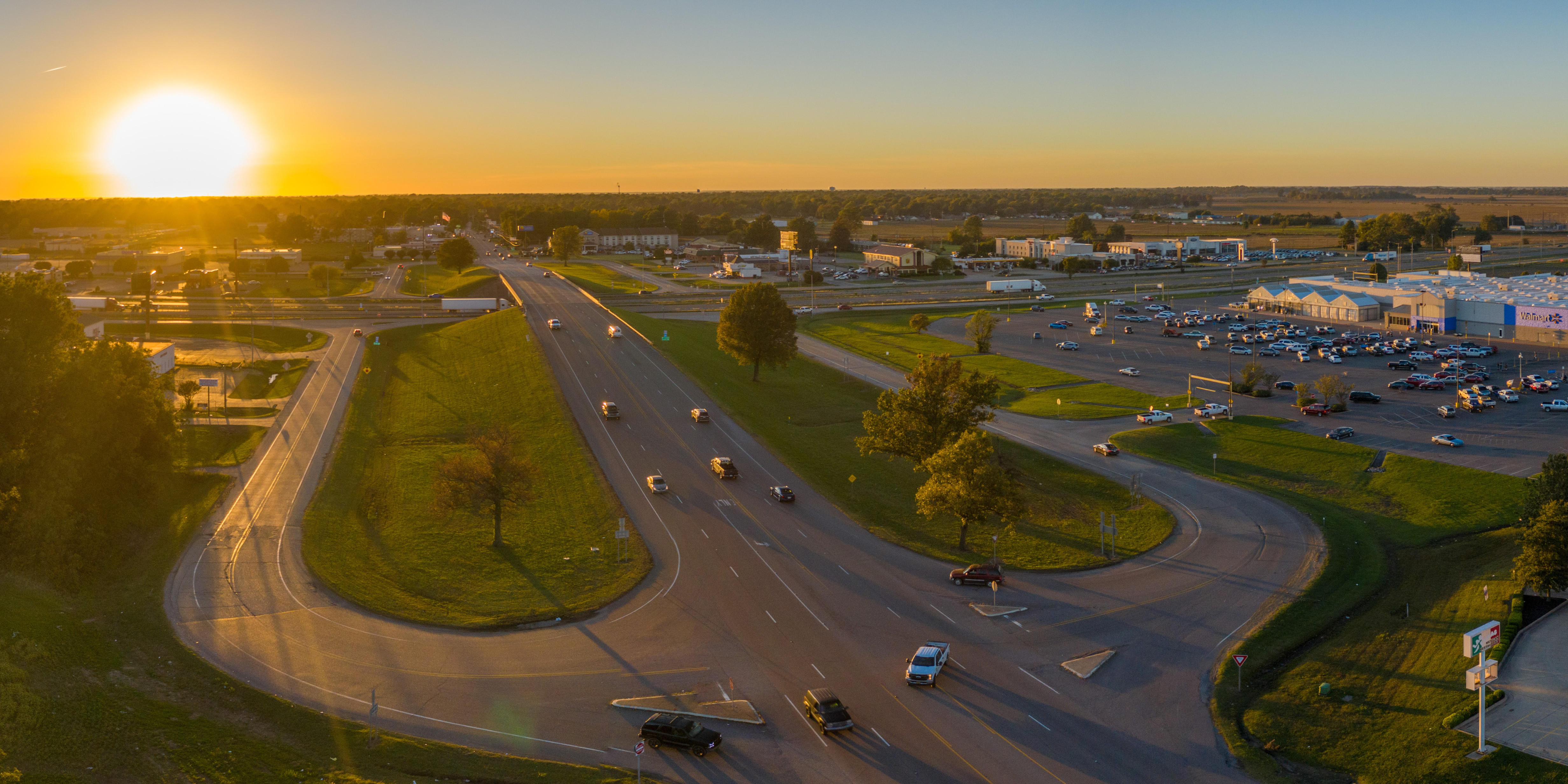Memphis: 50 miles
Little Rock: 189 miles
St. Louis: 228 miles
New Orleans: 459 miles
Chicago: 463 miles
Dallas: 540 miles
Atlanta: 486 miles
Tulsa: 457 miles
River Access & Transportation
Mississippi is the nexus of transportation advantages for business. Transportation on the Mississippi River is the most prized opportunity for shipping materials and products. One top of efficient waterway transportation, companies also have access to rail, truck, and air transportation.
Mississippi River Barges


Mississippi County
Watco Terminals at Blytheville
Watco Terminals - barge and rail terminal on the Mississippi river capable of handling bulk fertilizer, liquids, and transload of steel. The terminal handles a variety of products via truck, barge, and rail, serviced by BNSF).
Port of Osceola
Port of Osceola - currently handles wheat, rice, soybeans, and sand, and any bulk commodity can be handled from the three available docks at the terminal. This port encompasses a total of 500 acres, with 200 acres available for development.
Pointsett Rice & Grain, Inc.
Pointsett Rice & Grain at Osceola - currently handles wheat, rice, soybeans, corn, DDG, coal, and sand, and any bulk commodity can also be handled. The only slackwater harbor on the Mississippi River between St Louis and Memphis. Nine feet channel depth.
Memphis
International Port of Memphis
International Port of Memphis - covers the Tennessee and Arkansas sides of the Mississippi River. The International Port of Memphis is the second largest inland port on the shallow draft portion of the Mississippi River, and the 5th largest inland port in the United States. The Port of Memphis consists of three separate slack-water harbors: Pidgeon Industrial Harbor, McKellar Lake Harbor, and Wolf River Harbor. Connectivity includes 5 Class 1 railroads in the city or by Road via I-40, or Air using FedEx.
Railway
Burlington Northern Santa Fe Railway Company (BNSF)
Burlington Northern Santa Fe Railway serves several Mississippi County properties. With approximately service 4 times daily, Mississippi is well served with this Class I railway. Connection to other Class I rail companies, including Union Pacific Railway, CN/IC, CSX Transportation, and Norfolk Southern, is accessible through Memphis, TN.
Interstate

Interstate 55 (I-55), a major North-South freeway, and U.S. Highway 61 run through Mississippi County parallel from the north to the south end of the county. State highways traverse all through the county, east and west as well as north and south. Interstate 40 (I-40), a major East-West route, is within 45 miles to the south. Interstate-69 (I-69), nicknamed the NAFTA Highway, is in development and easily accessed from Mississippi County to support another quality North-South truck route.
Mississippi County is located within a 1-day drive (truck) to major markets in the central and southern regions of the United States.
Air
Mississippi County is within a one-hour drive of an international airport and also home to four airports.
Memphis International Airport
Memphis International Airport (MEM) has direct commercial flights to 34 destinations, of which two are international (Canada and Mexico). Memphis is also the largest transportation hub and the main sorting system in FedEx’s global network.
Arkansas International Airport
Arkansas International Airport (KBYH), formerly Eaker Air Force Base, located in Blytheville, Arkansas. This municipal airport is owned and managed by the Gosnell Regional Airport Authority. Concrete runway dimensions 11,600 ft long and 150 ft wide, lighted and equipped with the Federal Aviation Administration six instrument approach and VOR. Aviation Repair Technologies operates its Component MRO division, a FAA and EASA-certified repair station, at the Arkansas International Airport.
Blytheville Municipal Airport
Blytheville Municipal Airport (KHKA) 5,000 ft. runway, lighted, VASI approach and non-directional beacon approach (NDB). This municipal airport is owned and managed by the City of Blytheville Airport Commission.
Osceola Municipal Airport
Osceola Municipal Airport (7M4) 3,800 ft. runway. This municipal airport is owned and managed by the City of Osceola who commission an Airport Master Plan in 2019.
Manila City Airport
Manila City Airport (KMXA) 3,500 ft. runway. This municipal airport is owned and managed by the City of Manila.